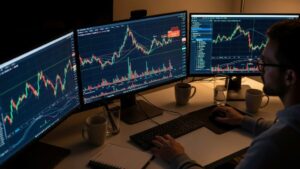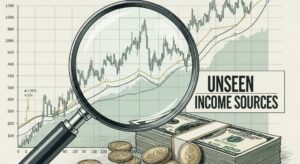Management of Investments

Management of investments in the management of investors’ money or other assets. By putting money into a diverse portfolio of financial instruments and other assets.
Two of the most frequent investments are publicly traded securities (stocks) and fixed-income instruments (bonds).
Understanding customers’ needs, standards, rules, and constraints are critical to a successful investment. Asset allocation methods must evolve in tandem with market conditions. Constant communication and monitoring are necessary for portfolios to stay on track to meet their objectives.
Investment management is the activity of professionals who specialise in this field. With the help of a well-chosen combination of financial instruments and other assets, the investment manager hopes to meet predetermined investment goals.
Investment managers often manage endowments for educational institutions and pension plans for firms on behalf of workers. Investment management services are more readily available to individual investors through mutual funds and brokerage firms.
What are the different types of investments done by investment managers?
Your clients’ wants and demands determine the type of investment management that you select for your portfolio.
Investment managers generally employ these strategies since they each have advantages and disadvantages.
Value at the Center / Relative
Relative worth/core value In their search for cheap or overpriced stocks, managers are laser-focused. Their primary focus is on investigating individual stocks, which they analyse various data, ranging from P/E ratios to flow statistics. Using statistical tools or basic company research, managers can find undervalued assets using the relative value methodology slightly different.
Contrarian
The investing strategy employed by contrarians is very tactical. Like relative value managers, Contrarians seek market discrepancies, but they’re also ready to place bets on the opposite side of the market. There are three types of strategies: bottom-up, top-down, and macro.
Bottom-up investors need to study before investing, looking at a company’s financial statements, management and competitive advantages. A company’s future success can be affected by market trends identified by top-down management using economic data.
Hedge funds aren’t the only ones who take macro bets in their portfolios; many huge mutual funds do. It’s a common misconception that macro managers only focus on broad market trends directly impacting the economy.
With a Managed Future
Investing in futures contracts on the leading exchanges, such as bonds, currencies, commodities, and stock indexes is part of managed futures strategies. In many cases, these investors use a top-down strategy, but they don’t undertake any fundamental analysis before making a choice. Instead of using traditional valuation models, these funds use momentum indicators like moving averages.
Arbitrage in mergers and acquisitions
Following merger announcements, price discrepancies can be exploited by merger arbitrage investors. For illustration, consider that an investor buys a stock for $20 right before it is acquired for $30 and sells it for $40 following the acquisition. Using this approach, you can double your money in 18 months if it yields 5% per month and the sale is completed in six months.
Factors to consider in a pension fund’s investment policy
The anticipated return on investment
A long-term investment management strategy’s primary purpose is to build wealth, although short-term strategies may also need to provide income.
Perceived willingness to take a chance
Considerations such as a company’s current liabilities and expected cash flow are essential in determining how much risk to take.
The currency risk
An exchange rate risk exists when a fund invests in assets denominated in a foreign currency. Both the fund’s assets and liabilities play a role in determining this risk level. For example, if most of a Canadian business’s employees are based in Canada but the pension plan is funded with US dollar assets, the company will be very vulnerable to fluctuations in the value of the two currencies.








